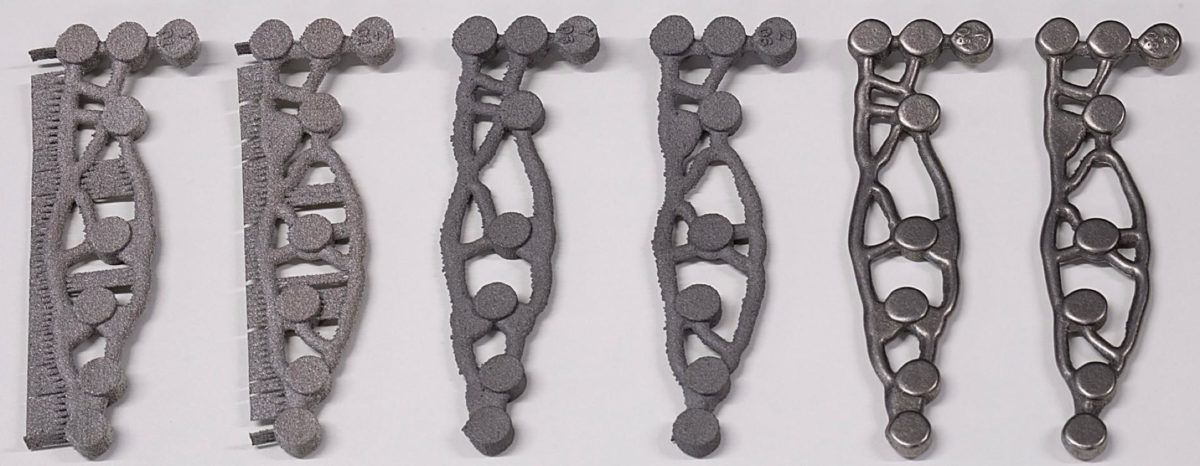
AI engineering technique offers solution to patient-specific knee implants
Researchers at BHP founder-members the University of Birmingham and University Hospitals Birmingham have used a technique called Generative Design to produce a knee implant that can be used to treat osteoarthritis.
A proof-of-concept paper – describing in detail the comprehensive workflow of design and advanced manufacturing processes for a generatively-designed, patient-specific bone fixation device – has been published in Progress for Additive Manufacturing by the BHP members working in partnership with design software specialists Autodesk, Manufacturing Technology Centre (The UK National Centre for Additive Manufacturing).
Generative design uses artificial intelligence (AI) and machine learning to design parts that are absolutely optimal for their end use when manufactured, and this study is the first known application of Generative Design to a biomedical implantable device.
Using this technology in medical applications is advantageous for several reasons. For example, knee arthritis is currently treated with implants that are only manufactured in a limited number of shapes and sizes. Although the use of new 3D printing techniques to make implants designed to an individual patient is emerging, this doesn’t take into account the constraints imposed by surgical planning, or the patient’s weight or activity levels. These are important elements to understand how a patient’s anatomy and a knee implant will interact and are crucial to both implant design and post-surgical rehabilitation.
Generative design however allows the implants to be biomechanically specific, so the implant is tailored to the load it will be bearing. This also allows the end product to be lighter, less prominent and minimally invasive, which means the patient will heal more quickly, and is also less likely to need revision surgery.
In the new study, researchers set out how the design produced by Autodesk’s software can be manufactured and processed into a functional prototype, including how much of the process can be automated.
Postgraduate and lead researcher, Mr Sanjeevan Kanagalingam, of the University of Birmingham, said: “The ‘one-size-fits-all’ approach used in knee surgery to treat osteoarthritis can result in major complications, primarily due to overengineered implant designs and therefore limits surgical adoption and patient outcomes. This AI integrated design interface allows us to configure tailored surgical planning parameters and take personal biomechanical information into account, and synergistically combine it with the embedded manufacturing intelligence to model medical-grade titanium implants that are specific to each patient.”
Principal Investigator and Senior Lecturer, Dr Lauren Thomas-Seale, also at the University of Birmingham, added: “The combination of the academic, industrial and clinical knowledge of the team working on this project, and the vast design space offered by Generative Design, has yielded implant designs beyond anything that has been seen before. Such an approach, noting the diversity of the project team, has enabled the development of a design process which can take into account the many differences between patients, for example the variation between male and female body mass.”
The next steps will be to mechanically test the devices to see how much they bend and flex under loads. If successful, the team will eventually move on to clinical testing.
Kanagalingam concluded: “This generative design approach not only increases the patient-specificity of bone fixations but also serve as a novel, versatile framework in the design of load-bearing patient-specific implants for the hips, shoulders and maxillofacial surgeries”